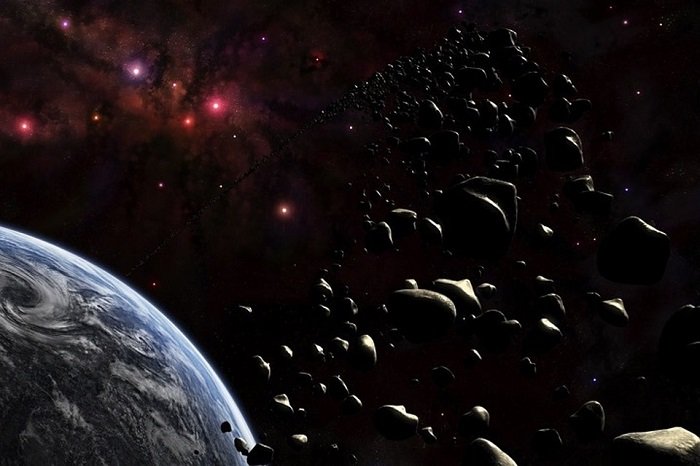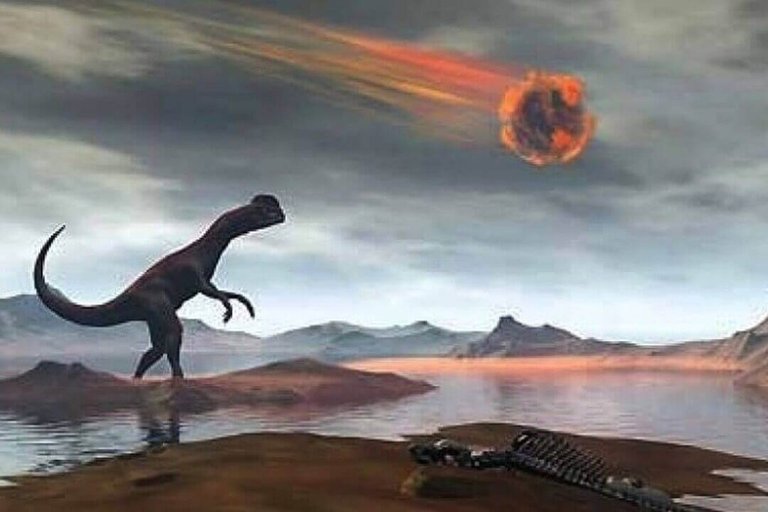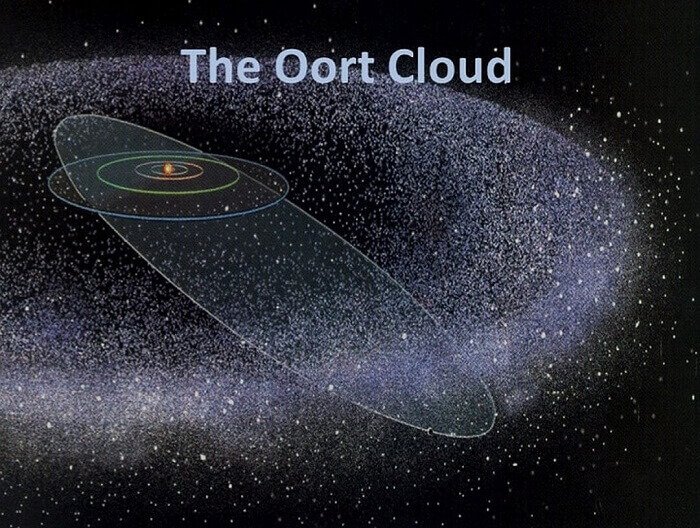
Researchers from Canada , the United States and the United Kingdom (University of Toronto, Planetary Science Institute, Southwest Research Institute, University of Southampton) - astronomers, geophysicists and geologists led by Sara Mazrouei, determined the age of the craters that resulted from the fall of large asteroids to the moon and the earth. Surprised: craters about a billion years old are very rare. Our planet and its natural satellite are mostly dotted with those that began to appear en masse about 290 million years ago. Since that time, asteroids began to fall 3 times more often.
Traces of a massive bombardment are clearly visible on the moon. Most terrestrial craters are barely noticeable — destroyed by erosion. However, scientists claim that we have them no less. And they arose at the same time with lunar craters - that is, during the period when the intensity of attacks from space suddenly increased many times over.
Scientists shared their discovery in the journal Science in an article with the corresponding name of the Paleozoic. Briefly about him told the site NASA.
The authors of the study commented on the NASA Lunar Reconnaissance Orbiter (LRO) spacecraft, which actually allowed us to determine the age of lunar craters. His devices captured thermal radiation emanating from the crater on lunar nights. And by analyzing its strength and character, it was possible to calculate the age of the crater.

Scientists shared their discovery in the journal Science in an article with the corresponding name of the Paleozoic. Briefly about him told the site NASA. The authors of the study commented on the NASA Lunar Reconnaissance Orbiter (LRO) spacecraft, which actually allowed us to determine the age of lunar craters. His devices captured thermal radiation emanating from the crater on lunar nights. And by analyzing its strength and character, it was possible to calculate the age of the crater.
Sarah Mazrui and her colleagues believe that the leapfrog, which arose in the asteroid belt, ultimately destroyed the dinosaurs, which began to strongly multiply 290 million years ago and decay in about 40 million years. Finally finished them off 15-kilometer block, which crashed into the Gulf of Mexico 66 million years ago. Details of this terrible catastrophe here:
It became known, what other misfortunes were brought to Earth by an asteroid that killed dinosaurs.
“The fate of the dinosaurs was predetermined,” noted Sarah’s comrades-in-arms, William F. Bottke and Thomas M. Gernon. research by Thomas Gernon of the University of Southampton.
By the way, about some kind of collision that happened in the asteroid belt 290 million years ago, Japanese scientists and their Russian colleagues from the Siberian Branch of the Russian Academy of Sciences and the Novosibirsk State University were repeating . In their opinion, it was this collision that caused the so-called Chelyabinsk meteorite, which fell in 2013. Scientists have made their conclusion by finding jadeite in a meteorite - a mineral that is formed at high pressure and temperature. They were 12 Gigapascals and more than 2 thousand degrees. That is, the result of a space accident . Maybe even the same one that sent a swarm of asteroids to Earth.

If the version of Sarah Mazrui is correct, then enhanced asteroid bombardment can begin at any time as a result of some new - unpredictable - disaster in the asteroid belt. And then, as they say, beware. But perhaps others are right.
And then before the global disaster is still very far away.
Unknown stars
Astronomers before believed in massive attacks from space. But they saw their sources elsewhere — in the Oort cloud — a sort of giant bubble filled with billions of large ice and rock blocks. Scientists do not exclude: if something bothers him, then some of these boulders will rush to Earth.
For example, the star Gliese 710 from the constellation Snake, which approaches the solar system at a speed of several tens of kilometers per second, can disturb. A Russian astronomer Vadim Bobylev from the Main (Pulkovo) Observatory (GAO RAS) warned about her upcoming visit . He used data collected by the Hipparcos European Research Probe. Namely, information about the movement of about 35 thousand of the stars closest to us. Reconstructed their orbits and calculated that the star Gliese 710 with a probability of 86 percent will come very close to us. And maybe even be in orbit of Pluto .
The star Gliese 710, with a mass of 0.6 solar, is still 63 light years away . But this distance is rapidly reduced.
It is unlikely that the guest will crash into the Sun or into any of the planets. But asteroid and comet bombardment its gravitational field can cause.

The outer edges of the Oort cloud pass in 1-2 light years from the Sun - it is a quarter to halfway to Proxima Centauri, the nearest star in the Alpha Centauri star system. From the calculations of Bobylev and his colleagues from the Max Planck Institute for the Astronomy in Heidelberg: it is possible to create serious confusion in the Oort cloud capable of stars flying 3.26 light years from the Sun. They are expected in quantities from 19 to 24 in the next few million years.
And the maximum distance from which the gravitational effect of a star flying past can knock some asteroid out of the Oort cloud is 16.3 light years from the Sun. At this distance, fly from 490 to 600 stars.
Planet X
Scientists suspect that some planet, which is now being sought, may interfere in the affairs of the Oort cloud. It is assumed that it is huge - 10 times more massive than the Earth, moving in a highly elongated orbit, then approaching the Sun by 200 astronomical units, then moving away by 1200. Flies over it in about 15 thousand years.
The indirect evidence that there is either a gigantic planet or a cooled star in the far outskirts of the solar system is complete. On her show anomalies in the movement of other celestial bodies. But the "troublemaker of peace" itself has not yet been discovered.
Read More About space
